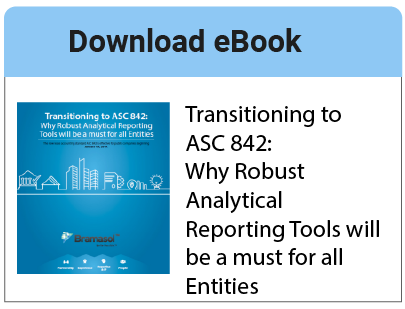Last month, FASB and the International Accounting Standards Board (IASB) reaffirmed amendments they had previously proposed to in order to clarify principal vs. agent guidance in the new, converged revenue recognition standard (See more detail at Journal of Accountancy).
The core concept is as follows: "The principle for determining whether an entity is a principal or an agent in Topic 606 and IFRS 15. An entity is a principal when it controls the specified good or service before that good or service is transferred to the customer. An entity is an agent when it does not control the specified good or service before it is transferred to the customer."
 However, as with most broad regulatory "clarifications" there is always a significant bit of analysis to understand your unique situation and fit the Principal vs. Agent handoff mandates to your compliance and business requirements.
However, as with most broad regulatory "clarifications" there is always a significant bit of analysis to understand your unique situation and fit the Principal vs. Agent handoff mandates to your compliance and business requirements.
As business process implementation experts we cannot take responsibility for interpreting the accounting issues in any specific customer’s case. However, I would like to share some observations from our real world experiences with this issue.
Fundamentally, the connection to RevRec is that it is necessary to know who is controlling the performance of obligations (who is a principal) and who isn’t (an agent), in order to determine when revenue is recognized and who has to account for any material differences between sales and SSPs for items sold as part of a multi-element arrangement.
For example, if we have a manufacturer who sells to a distributor who sells to the end customer, there could be combinations of elements on both the manufacturer-to-distributor, as well as on the distributor-to-end customer level. That may influence both when revenue is recognized (at the time of sale to the distributor or at the time of sale to end customer or some other point, eg. activation) and who has to calculate any cross-product subsidies (allocations).
In real life, we have seen aspects of these issues in multiple RevRec projects, for example:
- At a global communications systems supplier, they basically wait for a number of criteria to be met: completion = time of recognition. These define the aspects of principal-agent questions at various points in the channel, such as for subcontractors performing installation, etc. Analysis has determined that most of these criteria will not need to change, even with the new standards.
- At a major provider of memory solutions, the picture is a little more complex. They have rebates that are given to distributors, as well as coupons given by distributors to retailers for use by end customers. Under the new regulatory guidelines, the determination of Principal vs. Agent at each point in the process may potentially change how to recognize these with regard to timing or allocation.
The bottom line is you need to start now through active consultation with your accounting firm and your business process partners in order to understand and prepare for how the recent "clarification" of Principal vs. Agent really applies to your specific situation.
Remember the clock is ticking and time is not your friend! Start now to make 2016 a Year-of-Action in getting ready for the new Revenue Recognition requirements.

.png?width=3121&name=MicrosoftTeams-image%20(33).png)


